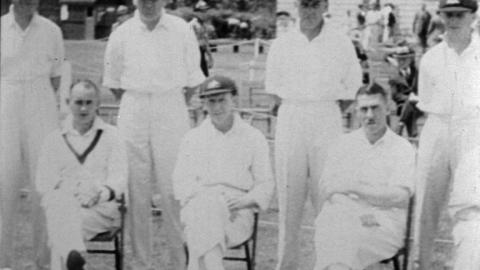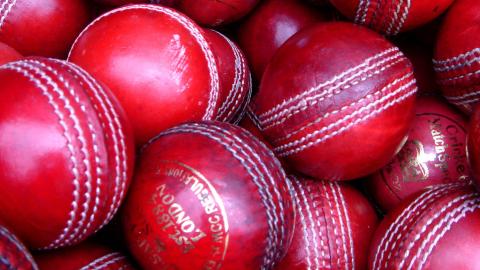
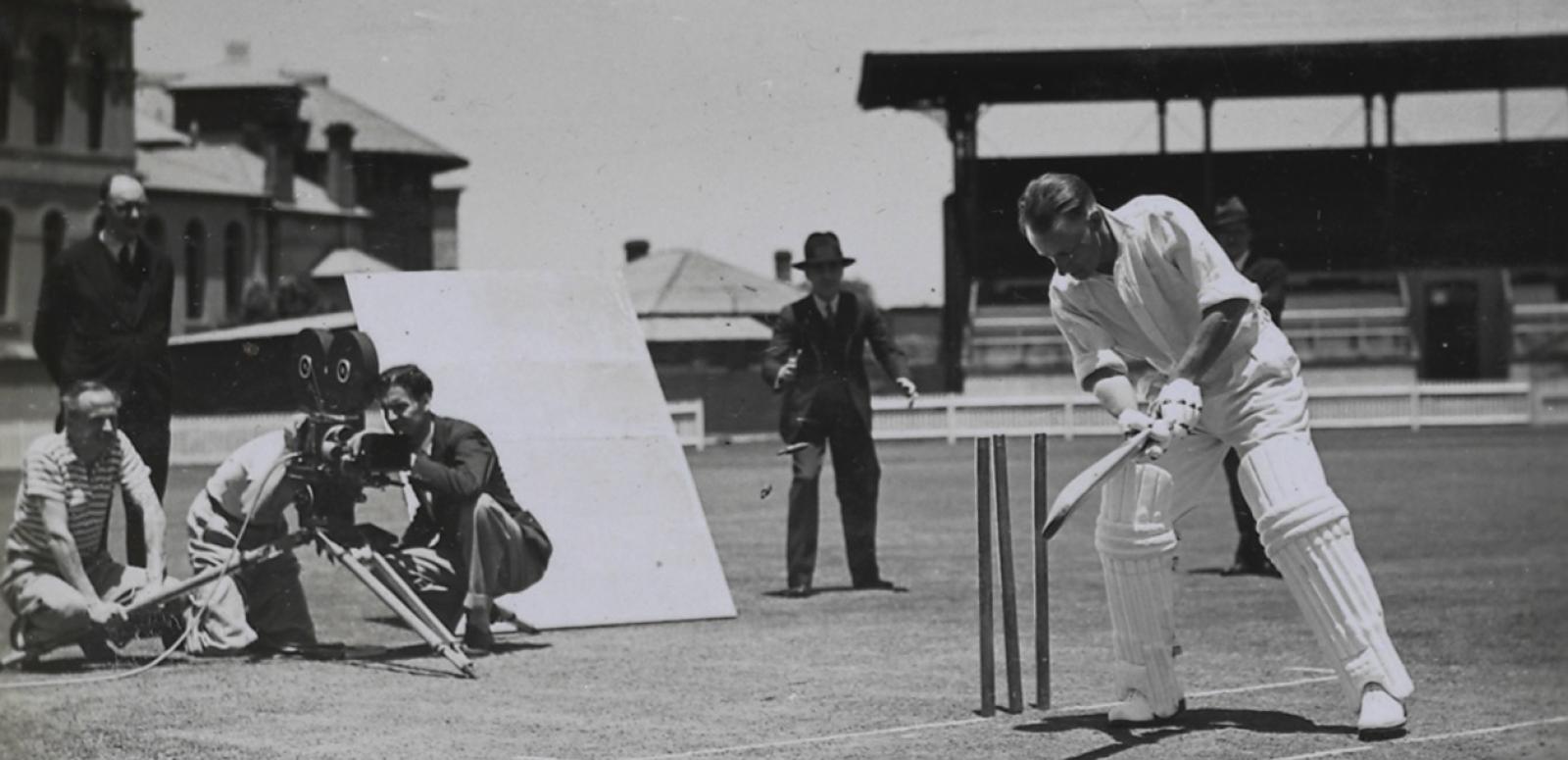
Donald Bradman: film actor
Sir Donald Bradman: Silver Screen Sportstar
Sir Donald Bradman is recognised internationally as one of the greatest cricketers of all time, but did you know he also appeared in a movie?
The Don and The Doctor
The Don was no stranger to the camera – he had featured in a number of newsreels and educational films during the 1930s. But his one and only feature film role was in a little-known melodrama, The Flying Doctor (Miles Mander, Australia-UK, 1936), starring Hollywood import Charles Farrell. Farrell plays an adventurer whose path crosses that of a cricket-playing doctor (James Raglan) who, after trouble with the jealous husband of a love interest, becomes a flying doctor in the outback.
In this clip, Farrell is at the Sydney Cricket Ground watching Bradman batting for South Australia – and fast approaching a century:
Excerpt from The Flying Doctor (1936). NFSA Title No. 6897
The doctor (played by James Raglan) is bowling to Bradman. Watching in the stands with Sandy (Charles Farrell) are Betty Webb (Margaret Vyner) and her jealous husband Geoffrey (played by Eric Colman, brother of British Hollywood star Ronald Colman).
A Batting Cameo
This cricket sequence was the first scene shot for the movie, on 22 January 1936, taking advantage of Bradman’s presence in Sydney following a New South Wales vs South Australia Sheffield Shield match. Having moved from NSW to Adelaide, it was Bradman’s first series for South Australia and was prior to him assuming the Australian captaincy for the 1936–37 Australian Ashes series (famous for Australia coming from behind to win 3–2 against England).
An account of the filming was written and published in newspapers by well-known cricket commentator AG ‘Johnny’ Moyes, who wrote, ‘We saw Don hit a sixer – not unusual. Then we saw him bowled – this was a bit strange.’ Production stills from a scrapbook held by the NFSA indicate the script initially had Bradman being bowled and not caught as shown in the final version of the film (see Gallery below for scrapbook images relating to the film).
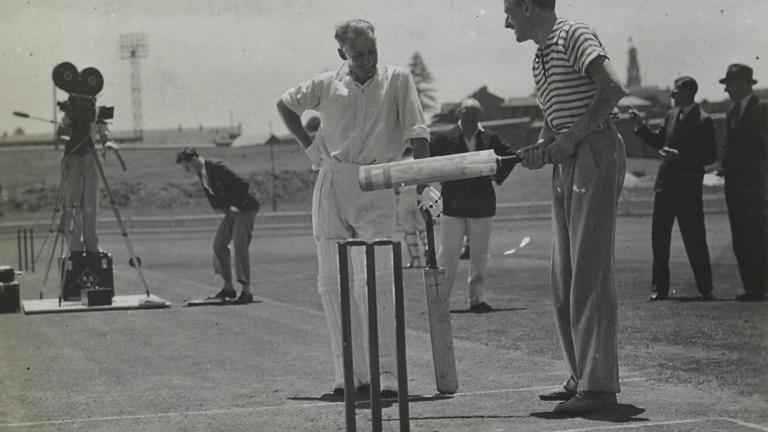
Bradman and director Miles Mander discuss the finer points of batting in a production still from The Flying Doctor, 1936. NFSA title: 360608
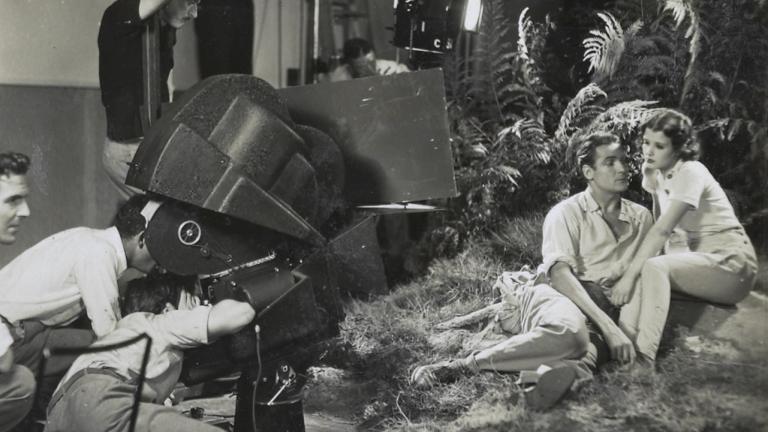
Charles Farrell and Mary Maguire on set at the Pagewood Studios in Sydney, during production of The Flying Doctor, 1936. NFSA title: 360608
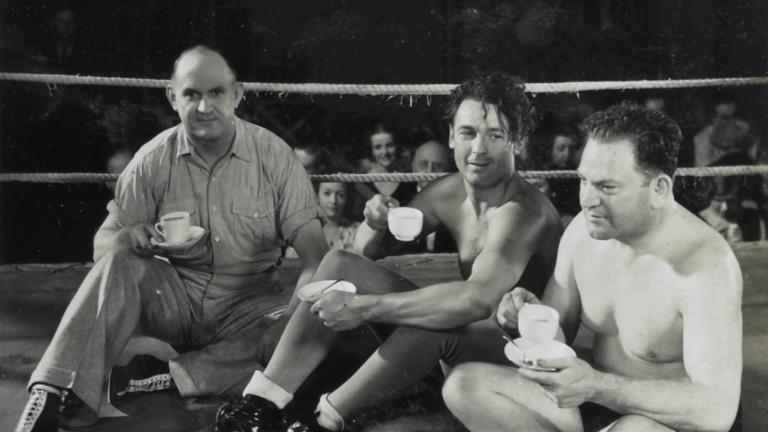
Tea break at Leichhardt Stadium. Referee Jim McMaster, Charles Farrell and professional wrestler Jack Clarke during the production of The Flying Doctor, 1936. NFSA title: 360608
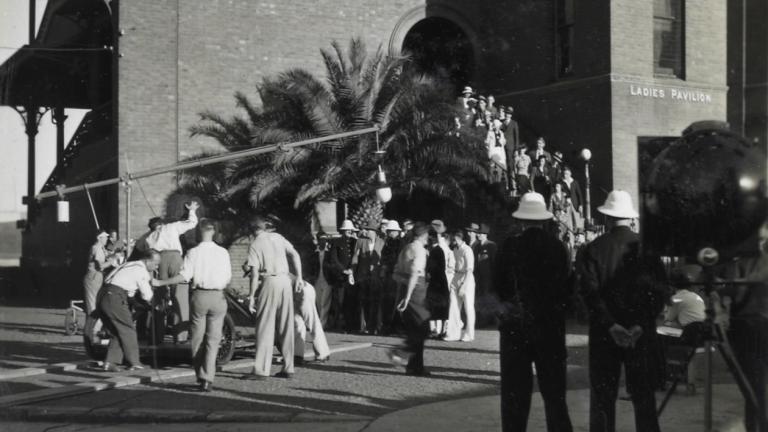
Filming The Flying Doctor at the SCG Ladies Pavilion in 1936. Sandy (Charles Farrell) and the Doctor (James Raglan) are led away by police. NFSA title: 360608
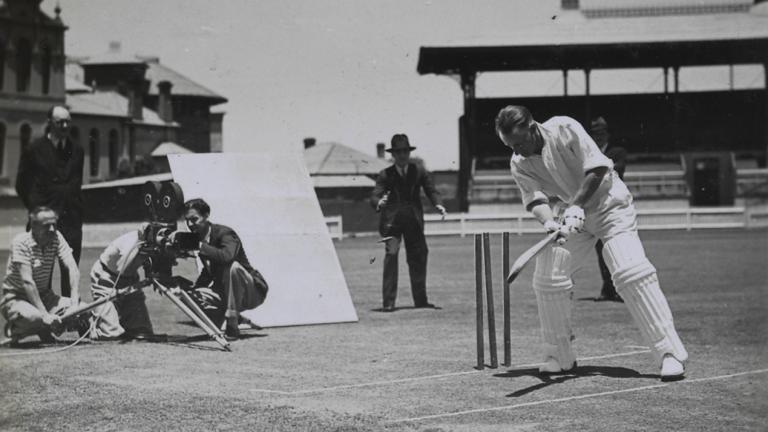
Bradman is bowled. Filming The Flying Doctor in Sydney, 1936. NFSA title: 360608
The footage of Bradman batting at the SCG was likely edited from three different sources. Along with the 22 January filming, much of the cricket action comes from a Cinesound newsreel of a Sheffield Shield game played between NSW and Victoria from 26–30 January 1934, with Bradman in full flight for New South Wales against Victorian bowler 'Chuck' Fleetwood-Smith. The crowd scenes and shots of James Raglan as the Doctor bowling would have been taken in February 1936, once the cast had assembled. Cricket historians will notice that many of the players’ names listed on the SCG scoreboard were away touring South Africa at the time of filming.
Hollywood star Charles Farrell didn’t arrive in Sydney from the USA until 28 January 1936, but attracted much attention when he did. A reported crowd of 30,000 people gathered at Sydney’s Bondi Beach in February to catch a glimpse of him while his stunt double was being selected from the participants of a Surf Life Saving carnival.
A Well-Pitched Delivery
In the following clip, Farrell gets in a fight after the match and is arrested, and a shirtless Don Bradman utters his only line of dialogue in the film:
Excerpt from The Flying Doctor (1936). NFSA Title No. 6897
The Flying Doctor hoped to appeal to audiences in Australia and internationally. It combined a story drawing on the Australian landscape, boasted British technical expertise behind the camera (including Gaumont British director Miles Mander, scriptwriter JOC Orton and cinematographer Derrick Williams), Hollywood drawcard Charles Farrell, and the inclusion of two well-known sporting identities – Bradman and wrestler Tom Lurich.
The film was moderately successful in Australia but only received a limited release in Britain and was not released at all in the USA. It did however receive a ‘special recommendation’ at the Venice Film Festival in 1937 and remains of lasting interest for featuring Bradman’s one and only feature film appearance.
Finding The Flying Doctor
The Flying Doctor was believed to be a lost film until around 1970 when, as later recounted by NFSA Curator Emeritus Ray Edmondson, a chance encounter led to the first eight of nine reels of the film being rescued from the back of a truck destined for the tip. The truck was full of cans of film cleared out from a demolished film studio in the Sydney suburb of Lane Cove. It attracted the attention of a local council employee who gave chase in his car and prevented the destruction of the films. They found a home in the predecessor to the NFSA, the National Film Archive at the National Library of Australia. The final reel was then located after a routine enquiry to the then National Film Archive in London.
Ray Edmondson recalls that the film's production stills came into the NFSA collection years later, after an official studio stills book was kindly donated by a member of the public who had picked it up at a suburban second-hand shop. Edmondson writes, 'A remarkable chain of coincidence had given us back not only [the full] film, but a complete coverage of its stills. Truly a happy ending.'
The National Film and Sound Archive of Australia acknowledges Australia’s Aboriginal and Torres Strait Islander peoples as the Traditional Custodians of the land on which we work and live and gives respect to their Elders both past and present.
